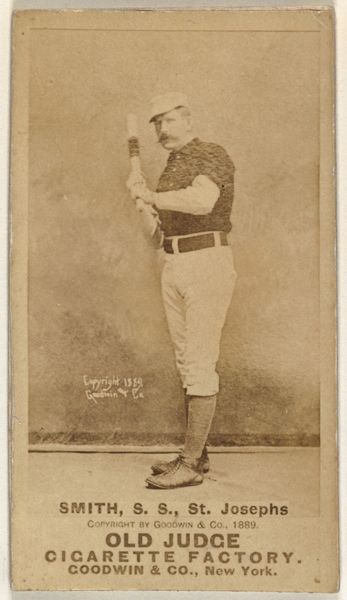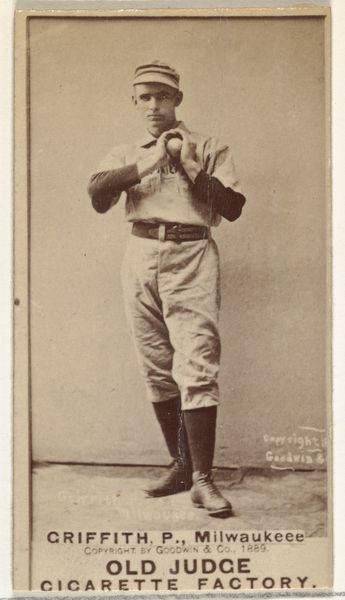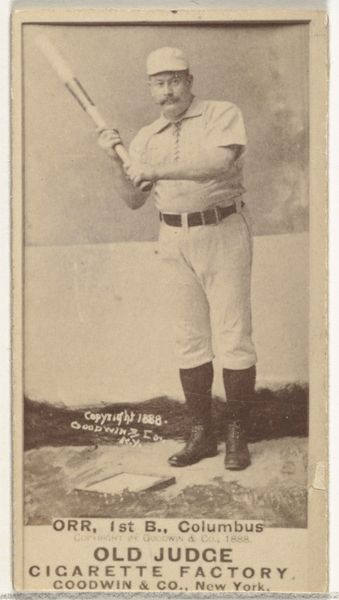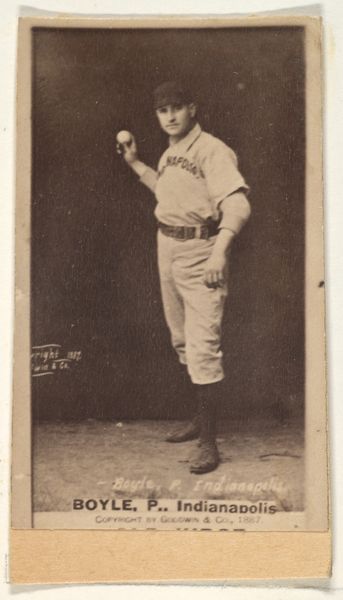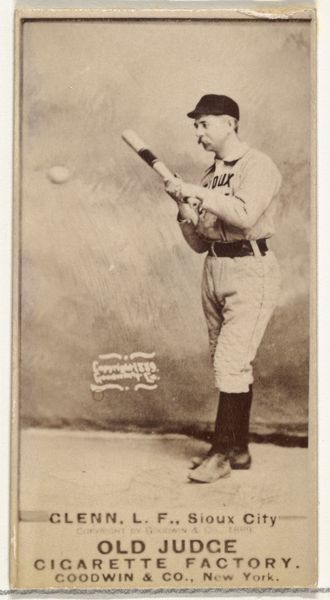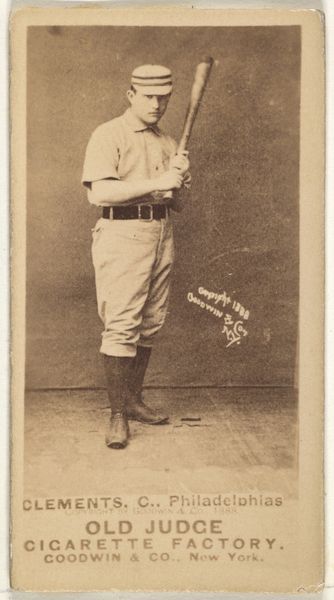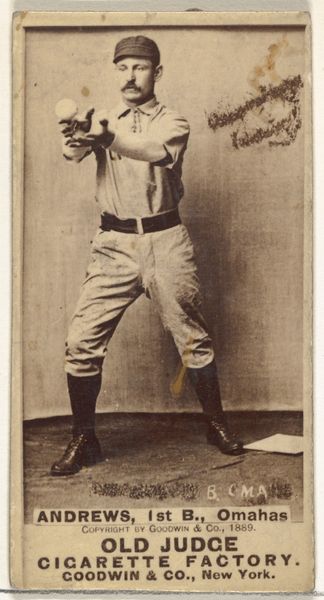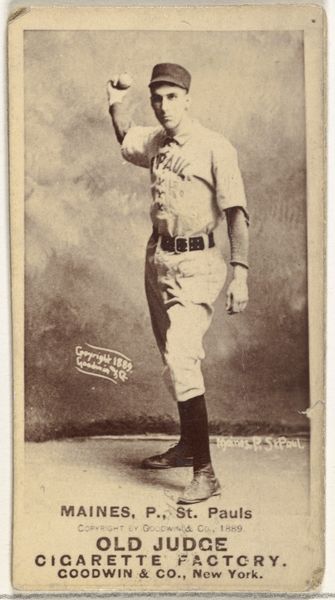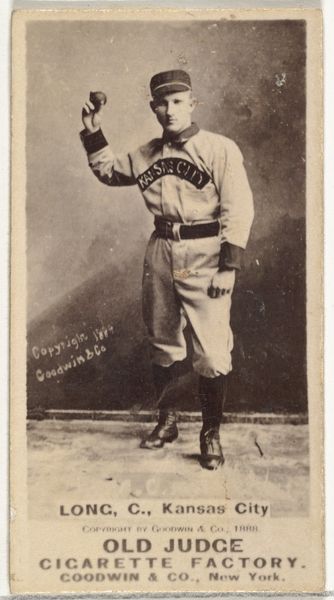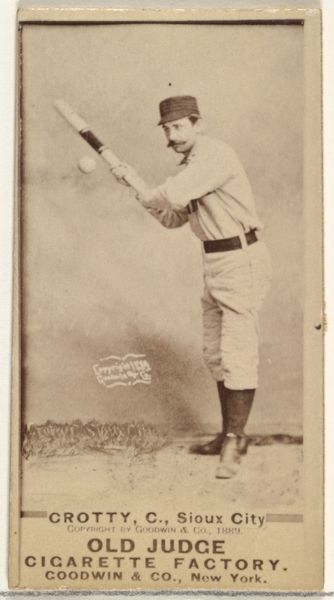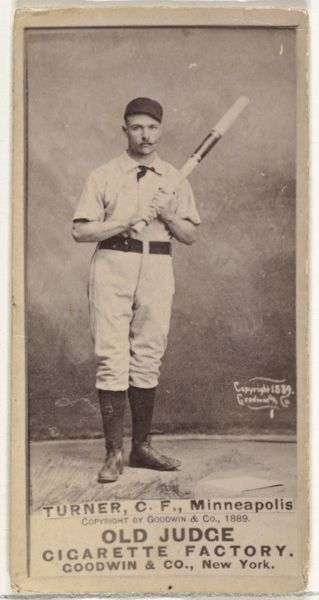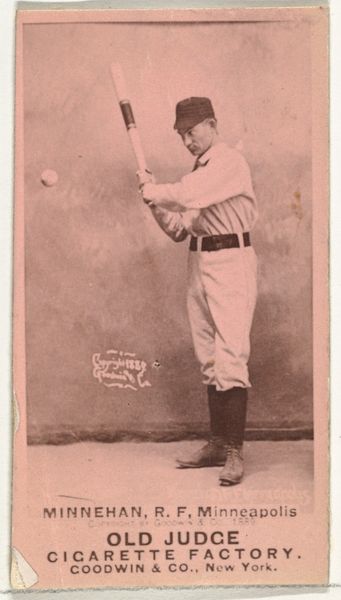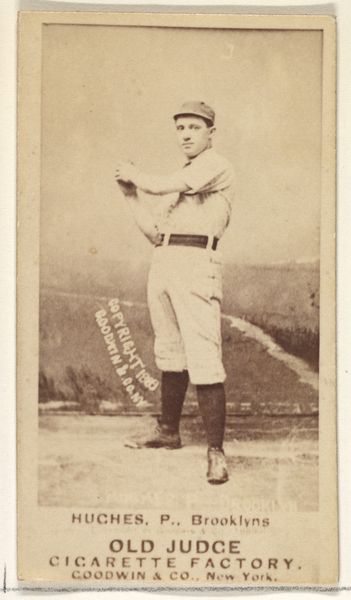
Connor, 1st Base, New York, from the series Old Judge Cigarettes 1887
0:00
0:00
drawing, print, photography
#
portrait
#
drawing
#
16_19th-century
# print
#
baseball
#
photography
#
historical photography
#
19th century
#
men
#
genre-painting
#
athlete
#
realism
Dimensions: sheet: 6 1/2 x 4 3/8 in. (16.5 x 11.1 cm)
Copyright: Public Domain
Curator: Our next piece is a photographic print entitled "Connor, 1st Base, New York, from the series Old Judge Cigarettes," created around 1887 by Goodwin & Company. It’s currently held in the Metropolitan Museum of Art. Editor: There’s a remarkable stillness in this portrait; his direct gaze is quite compelling despite the simplicity of the composition. Curator: Exactly. And, this stillness comes from a very deliberate pose intended to meet the technical limitations and the market of consumerism. These cards weren’t about artistic expression; they were commercial ephemera—inserted into cigarette packs to promote the brand. Editor: So, the muted tones, the tight framing – are dictated by the limitations of early photographic printing methods rather than artistic choice. It almost looks like a drawing! The starkness, however, truly concentrates your eye. Curator: Precisely. And this is key; because in 1887 photography and photomechanical printing methods were becoming increasingly common. Companies like Goodwin saw that using figures or known people as an advantage over others within this period to give brand awareness through material production for the sport. Consider that most cards feature an advertisement for tobacco right in the title. Editor: Ah, the overt capitalist driver; the placement indeed speaks volumes to labor practices within that period for these players or production companies. Although that commercialization is indeed blatant, Connor’s grounded posture, how he firmly holds the bat – this has inherent grace and strength. Curator: Absolutely. This form represents a new chapter, where leisure and commercial interest created celebrity athletes, as we would recognize in our era. The print itself, small and unassuming, facilitated a larger shift. Editor: It's easy to get lost appreciating the visual dynamics but looking closely highlights how intrinsic those relations are tied with a much larger capitalist exchange. Curator: Agreed. And even this form still resonates culturally because through a different set of lenses and interpretations new viewers are made. Editor: Indeed. Every piece is, inherently, tied together, no matter how independent of our analysis we try to look at it from, it ends with this constant material chain and how each of them is viewed in art and function is intertwined.
Comments
No comments
Be the first to comment and join the conversation on the ultimate creative platform.
